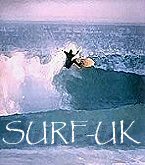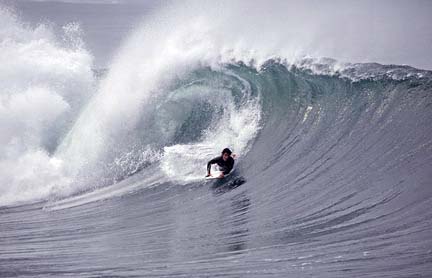 |
|
|||||||||||||||||
|---|---|---|---|---|---|---|---|---|---|---|---|---|---|---|---|---|---|---|
This page`s for our Boogie & Bodyboarding mates out there Bodyboarding has become tremendously popular in the UK, which has hundreds of beaches ideally suited to it.
The bodyboard differs from a surfboard in the fact that it is much shorter and made out of foam. Body boarding has been around since ancient Hawaiian days, it was called"Paipo" and was made out of koa wood.the new board consists of a foam 'core' encapsulated by a plastic bottom and a softer foam top known as the deck. The core is made up from dow/polyethylene, arcel or, more recently, polypropylene. Each type of foam gives the bodyboard a different amount of flex and control for the rider. Dow/polyethelene cores are best suited to cooler waters as they can be too flexible in warm water and the board does not flex properly. The type of foam is also consistent with the ride on the wave. Stiffer foams provide the rider with suitable riding conditions to make sure the bottom of the board does not turn out and snap in half. Some boards contain one or two rods (usually of carbon or graphite) called stringers to strengthen the board, reduce deformation, and add stiffness and recoil to the core, giving greater speed from bottom turns. If a single stringer is used, it is placed in the center of the board running parallel to the rails. If two are used, they are placed symmetrically about the y-axis. Knowing the number of stringers and their placements is important to prevent damage to the board when punching a hole for a leash plug. Adding a stringer to a polypropylene/arcel core can make it too stiff for cool water. Speed from the bottom turn is increased when a bodyboarder bottom turns and the board flexes and recoils, releasing energy. If the board flexes too little or too easily, speed is lost. Most modern boards are equipped with channels that increase surface area in the critical parts of the board which, in turn, allow it to have greater wave hold and control. The use of these channels also means that the tail of the board is free to move. Occasionally, skegs are installed to decrease slippage on a wave face. However, it also decreases the looseness and maneuverability required for many moves, leading to a decrease in their use. Skegs are very rarely used and even then almost exclusively by drop-knee or stand-up bodyboarders. Crescent tails provide the greatest amount of hold (keeping a rider on the board) in steep waves but make it difficult to slide the tail deliberately. Crescent tails are generally preferred by drop-knee riders because the shape interferes less. A bat tail is better suited for prone riders because it is easier to slide the tail. The bat tail also makes the bottom of the board slightly longer in the middle, helping to keep the rider's legs out of the water, reducing drag. Glued, or more recently, bonded via a hot air lamination technique, to this core is a thick plastic bottom (known as the 'slick') which gives the board strength and speed. Two main types of 'slick' are present in modern day bodyboards: the first and better-performing of the two is surlyn providing much more strength and projection. Another cheaper type of slick is known as High-Density Polyethylene or HDPE, which does not perform to the same standard. The top of the board (the 'deck') is made from a softer foam to give grip and cushioning to the rider. Bodyboarders frequently wax their boards to increase the coefficient of friction on contact surface areas. The shape of the board affects how it works. If the wide point of the board is near the nose, the board is best suited to prone riding as the riders weight is further up on the board. Boards with rails that are more parallel or ones with a wide middle and a narrow nose are ideal for drop-knee and stand-up riding as the rider's center of gravity is further back. Some magazines have an annual Board Test where unsigned riders test the new season boards and give a review, such as Movement magazine's Board Test. and Riptide Magazine's Board Guide.
|
||||||||||||||||||
Bodyboarding & Boogie-boarding in Cornwall & Devon |
||||||||||||||||||
|
||||||||||||||||||

